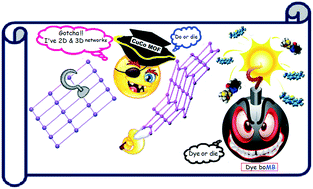Topology, magnetism and dye adsorption properties of metal organic frameworks (MOFs) synthesized from bench chemicals†
Abstract
Herein, two metal organic frameworks (MOFs), namely, [{Cu2(μ-OH)(μ-OAc)(H2O)(OAc)(bpy)2}NO3·4H2O]n (CuMOF-1) and [{Co(bpy)(ClO4)2(H2O)2}·bpy]n (CoMOF-2), where bpy = 4,4′-bipyridine, were synthesized, characterized and explored for their material importance in magnetism and dye adsorption. Under solvothermal conditions, two different metal salts (nitrate and perchlorate) were reacted with a simple bench chemical, i.e., a dipyridine derivative, namely, bpy to afford two MOFs having different yet interesting topologies and adsorption properties. The structure of CuMOF-1 was built from the repeating building blocks of the dinuclear cationic Cu(II) units composed of two Cu(II) ions, two bpy ligands, two acetate ions (OAc), one hydroxide ion (OH−) and a water molecule. Interestingly, two different Cu atoms existed in the structure with two different coordination geometries, i.e., octahedral and trigonal bipyramidal. The sql topology of the resulting 4-c uninodal net with point symbol {44·62} was obtained for CuMOF-1. The cluster representation of CuMOF-1 further gave hxl topology with 6-c uninodal nets (point symbol: {36·46·53}). CoMOF-2 was built from repeating mononuclear Co(II) units, where each Co atom coordinated with two bpy ligands, two perchlorate ions and two water molecules, resulting in octahedral geometry around the Co(II) ions. The surprising nature of the structure of CoMOF-2 was that one bpy ligand was coordinated with cobalt, while the second bpy ligand was present in the lattice in between layers, thus consolidating the structure by strong hydrogen bonding with the coordinated water molecules of the neighboring units. The resulting underlying net in CoMOF-2 was 2C1 with sql topology. The magnetic data indicated the presence of strong antiferromagnetic interactions in MOFs (J = −98.21 cm−1 in CuMOF-1 and θ = −8.8 K in CoMOF-2). The present MOFs were exploited for the adsorption of two dyes, namely, methylene blue (MB) and methyl orange (MO), which are organic pollutants. The adsorption studies confirmed that CoMOF-2 is a more selective adsorbent for MB. The kinetic data disclosed the pseudo-second-order mechanism of adsorption in both cases. The cation/anion–π interaction between the dyes and π-electron-rich bpy was responsible for the adsorption behaviour of MOFs. Moreover, the presence of free bpy in the lattice of CoMOF-2 gave rise to the strongest interactions, making CoMOF-2 the best adsorbent.



 Please wait while we load your content...
Please wait while we load your content...